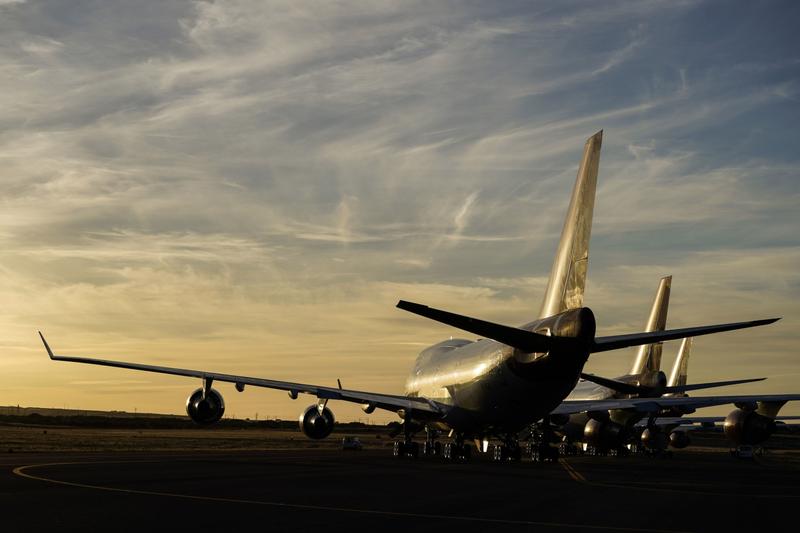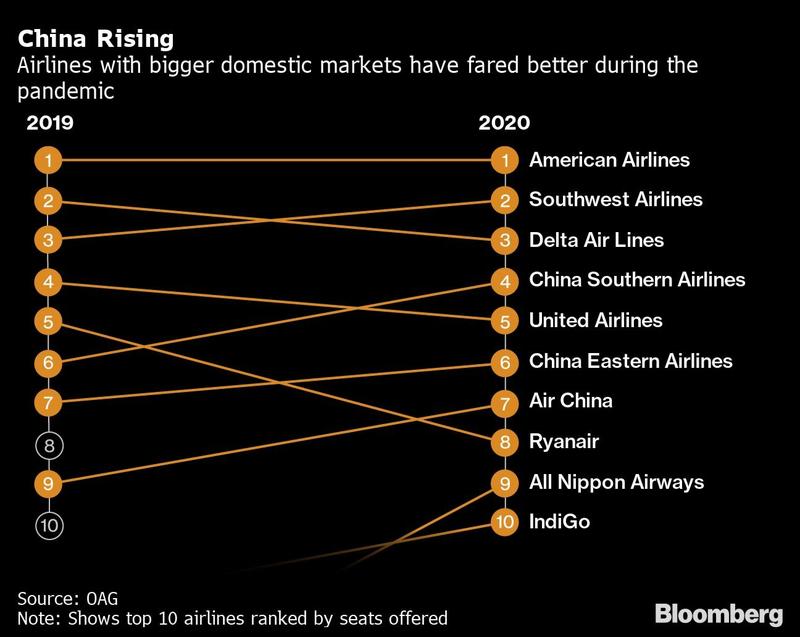 A Boeing Co 747 passenger plane (left) and other aircraft are seen parked at Ciudad Real International Airport, in Ciudad Real, Spain, on Oct 27, 2020. (PHOTO / BLOOMBERG)
A Boeing Co 747 passenger plane (left) and other aircraft are seen parked at Ciudad Real International Airport, in Ciudad Real, Spain, on Oct 27, 2020. (PHOTO / BLOOMBERG)
Few sectors of the battered global economy have been hit as hard as the airline industry in 2020.
The coronavirus pandemic left fleets of planes grounded and caused air passenger traffic to slump as much as 94 percent. Cash-strapped carriers have been struggling to rebuild, hampered by further waves of infection and strict curbs on travel.
Airline borrowings have climbed to record levels as carriers struggle to keep their heads above water. State aid to the sector has reached a gargantuan US$220 billion, according to IATA
From crippling financial losses and painfully diminished market values to shrunken networks and mounting debt piles, the industry has been put through the wringer. “If there ever was an annus horribilis, this is it,” International Air Transport Association Director General Alexandre de Juniac said. “Nobody in aviation will ever be nostalgic for 2020.”
ALSO READ: Airlines see losses swelling to US$157b before virus clears
Here’s a selection of charts tracing COVID-19’s impact.

Airline borrowings have climbed to record levels as carriers struggle to keep their heads above water. State aid to the sector has reached a gargantuan US$220 billion, according to IATA. Credit ratings company Moody’s Investors Service forecasts a further US$22 billion of liabilities will be added in 2021.
Companies will also need to refinance some of the emergency debt accumulated, while those now saddled with government shareholders must examine whether they can repay borrowings and become masters of their own destinies again.

Carriers will hemorrhage more than US$118 billion this year and almost US$39 billion in 2021, according to IATA. That’s way beyond the trade group’s predictions in June, when carriers retained hopes for a late summer surge in traffic, only to see them dashed by new waves of the virus.
The estimated losses represent the worst two years for the industry and dwarf those racked up during the last major aviation slump in 2008. They also mark an abrupt end to a decade-long run of positive earnings, highlighting the lingering vulnerability of carriers even after years of consolidation and investment in more efficient aircraft.
Meanwhile, the number of scheduled flights worldwide has remained stubbornly low since a May trough, leading traveler numbers to drop to levels last seen 17 years ago. Airlines have blamed the extended slump on government curbs such as quarantines for arriving passengers, as well as a failure to embrace airport testing, arguing that pent up demand for travel is being strangled.

That theory will be put to the test as a rollout of vaccines, combined with an acceptance of testing and so-called COVID-19 passports, may begin to open up national borders.
Any real relief could be some way off, though. While European leisure airlines were earlier reporting signs of revived demand around Easter, a new strain of the virus that’s emerged in the UK has caused chaos ahead of the Christmas holiday, with parts of the continent and places from Canada to India abruptly suspending travel links.
The impact of the coronavirus on flights in Asia has been neither as severe nor as protracted as in the west. The net effect has been to overturn established hierarchies and accelerate a shift toward eastern dominance of global travel.

Europe, heavily exposed to international travel, has been hit especially hard, with the UK displaced as the third-largest market and Germany and France dropping out of the top 10.
READ MORE: The eight airlines teetering on the brink of COVID-19 ruin
Chinese domestic traffic has proved especially resilient, rebounding to a level comparable with last year, and in turn propelling the country above the US as the world’s top passenger market for the first time since the dawn of powered flight more than a century ago. John Grant, chief analyst at flight-bookings specialist OAG, predicts an American recovery next year, albeit a brief one.

Asia-Pacific carriers have likewise climbed the airline rankings, though US operators still occupy the three top spots, sustained by internal flights that have continued largely unabated even as the pandemic continues to rage.
Western nations have also suffered a disproportionate amount of the airline sector’s 425,000 job losses. Of the 42 carriers that have failed or filed for creditor protection, 25 have been in Europe and North America.

Even with a vaccine that may bring back air travel around the corner, carriers face a desperate few months. The number of airlines collapsing or entering administration is likely to reach 70 through March, according to consultant IBA Group, while IATA doesn’t expect passenger traffic to return to pre-pandemic levels until 2024.


